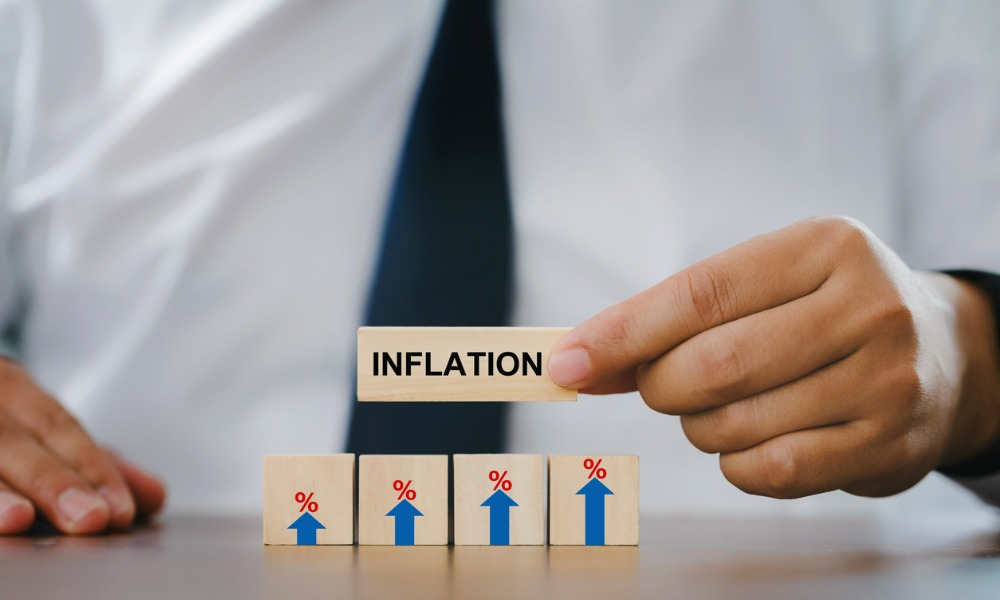

The Federal Reserve’s preferred inflation gauge showed signs of cooling in April, reinforcing expectations that the central bank may be edging closer to considering interest rate cuts – though tariff-related uncertainty could complicate that outlook.
The core personal consumption expenditures price index, which excludes volatile food and energy categories, rose 0.1% from the prior month and 2.5% from a year earlier, according to data released Friday by the Bureau of Economic Analysis. That marks the smallest annual increase in core PCE inflation since early 2020.
A measure of goods inflation that strips out food and energy also climbed 0.3%. Core services inflation — a key metric closely watched by policymakers – was largely flat. The April figures reflect a continuation of moderate inflation trends, even as broader economic concerns linger among consumers and businesses alike.
“Core services – which make up over 70% of core PCE, the Fed’s preferred inflation gauge – continued to ease, with notable improvements in healthcare and financial services,” said Bret Kenwell, investment analyst at eToro US. “Investors may be wondering if this continued progress could be enough to push the Fed closer to its first rate cut of 2025.”
The data also revealed that real personal spending increased just 0.1% in April, following a stronger 0.7% rise in March. The modest growth stemmed from higher outlays on services, while durable goods spending declined. Analysts noted a shift in consumer behavior, with April spending concentrated in categories such as housing, healthcare, and food services.
“Notably, there was a shift in contribution from March, which saw autos the largest driver of consumption, to April where services like housing, healthcare and food services were the biggest ticket items,” said Lara Castleton, head of portfolio construction and strategy at Janus Henderson Investors. “This uncertainty around tariffs, and continued stickiness around services, will likely keep the Fed cautious on cutting rates in the next month.”
The inflation outlook remains clouded by ongoing developments in trade policy. While some tariffs have been paused or rolled back amid negotiations with major trading partners, the long-term effects of previous import duties are still working through the economy. A ruling by the federal Court of International Trade earlier this week also blocked many of the existing tariffs, though a federal appeals court has temporarily paused that decision, adding a fresh layer of complexity.
“For the Fed’s part, Chairman Powell & Co. are approaching the potential inflationary impact of tariffs with caution,” Kenwell added. “The Fed and investors want to avoid a scenario where inflation re-accelerates and the labor market weakens – i.e. stagflation.”
Despite softer inflation readings, the balance between resilient consumption, tariff pressures, and muted services prices suggests the central bank will likely proceed with caution. Market participants expect rate discussions to remain data-dependent as the summer approaches.

By listening for what truly matters and where clients want to make a difference, advisors can avoid politics and help build more personal strategies.

JPMorgan and RBC have also welcomed ex-UBS advisors in Texas, while Steward Partners and SpirePoint make new additions in the Sun Belt.

Counsel representing Lisa Cook argued the president's pattern of publicly blasting the Fed calls the foundation for her firing into question.

The two firms violated the Advisers Act and Reg BI by making misleading statements and failing to disclose conflicts to retail and retirement plan investors, according to the regulator.

Elsewhere, two breakaway teams from Morgan Stanley and Merrill unite to form a $2 billion RIA, while a Texas-based independent merges with a Bay Area advisory practice.
Orion's Tom Wilson on delivering coordinated, high-touch service in a world where returns alone no longer set you apart.
Barely a decade old, registered index-linked annuities have quickly surged in popularity, thanks to their unique blend of protection and growth potential—an appealing option for investors looking to chart a steadier course through today's choppy market waters, says Myles Lambert, Brighthouse Financial.
